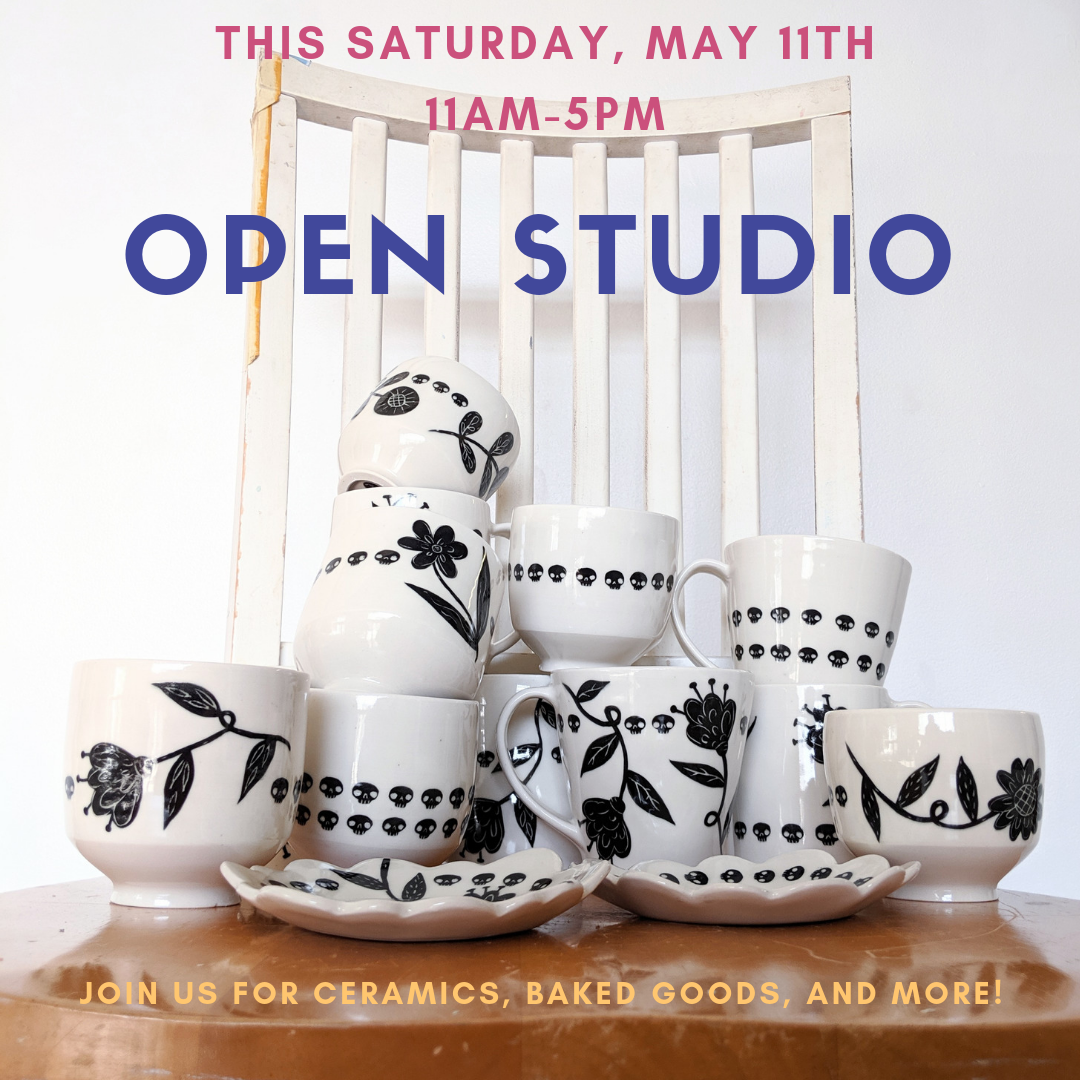These newly-arrived John Vigeland café cups are the only married cups to live in our cupboard! Pretty fitting since we received them as wedding gifts, and they've been put to immediate use.
I've been thinking a lot about these North Carolina salt-fired pots in the past few weeks. To start off way way back, John and I went to college together and started getting elbow-deep in clay around the same time. After leaving Carleton, John became an apprentice to Daniel Johnston at his Seagrove, North Carolina studio, and in the fall of last year he joined Alex Matisse at East Fork Pottery in Marshall, North Carolina. I had the privilege of meeting both of these fine gentlemen at the Arrowmont Utilitarian Clay Symposium in 2012, and this year Daniel was chosen as the McAndless Scholar at Eastern Michigan University for the winter semester. Ypsilanti (EMU's home) is literally the next town over from Ann Arbor, so I was lucky to meet a couple of times with Daniel and his lovely wife Kate Johnston, an Alfred grad who is a very talented ceramic artist in her own right.
The lectures and show I attended this past week by Daniel and Henry Glassie have my wheels spinning about the field and what the next stage of making will look like for my individual practice. First of all, seeing all these atmospherically fired pots makes me go weak at the knees-- you can see a little of what I'm talking about on the bottom of the cups pictured above, with their brown, glossy, orange-peel texture (which is caused by adding salt to a very hot kiln, wherein it fumes and fuses to the clay as glaze). Can't get enough of it! This in particular makes me wonder where Jon and I will ultimately settle, where we can both get what we need from the community. For instance, I probably couldn't have a kiln that fumes smoke containing hydrochloric acid in Berkeley. It also might be nice to have some proximity to our sets of parents, who are already separated by 1,500 miles. There are strong clay communities in Minnesota, North Carolina, and Montana, but those places seem to distinctly lack technology companies like the one Jon works for...I'm sure we'll figure it out, but I hope that the choice isn't too difficult.
I've also been thinking a lot about our mentors, the shadows they cast, and the differences between the experiences that John (V) and I found for ourselves after college. While he went out into the world to get extremely specific and practical experience making work to be sold and learning to build and fire huge kilns, I studied another year in Colorado, and then spent a year working full-time at a ceramic supply company, learning a great deal about that business and its tenuous position in the modern world. When I got to the point where I needed to make again, I was lucky enough to have the chance to work with John Glick. The situation in his studio is that we do chores and studio tasks together, but he makes his work and I make mine, which in ways very different from John Vigeland's experience is both freeing and still manages to have serious caveats, some inherent, and some self-imposed. (Have you noticed how many Jo(h)ns I deal with on a daily basis?!)
In any mentorship situation, it can be tricky to realize how much you know you don't know, while at the same time forming and cultivating professional beliefs that will define your work. That, combined with the absurd idea you should somehow be closing in on mastery despite being 20, 30, or a full 50 years behind your mentor, makes for a deep, complex bond with a person and their work. I also strongly value investing in community, and think that people like John Glick, Daniel Johnston, and his teacher Mark Hewitt, by creating opportunities for young people to start finding their voice, are a boon to the continuation of a ceramics community divorced from academia.
I'm also at John Glick's at a very pivotal moment. When I started in 2012, he was still in the studio making work full-time, but life transitions are imminent and he's in semi-retirement now, devoting his energies to a retrospective exhibition and moving with his wife Susie out to California so she can be near her children and grandchildren. For the past eight months I've been watching John unpack the emotions that come with breaking a fifty-year habit, and how you find meaning and productivity when you need to move on from your work. I realize this is a gift, and it may very well give me a complex to simplify my needs as much as possible because I'll constantly be thinking about packing it all up at the end. Time will tell.
In any case, I am thrilled to be attending a workshop with Kathy King at Penland this summer, and intend to take my sweet time in getting back to Michigan so I can visit lots of friendly potters in the area and talk even more about studio and community.
I guess I'm seeing some common threads between how these cups spent time in a very specific firing where they were "finished" together, and how that relates to marriage, being tied together with my soon-to-be husband Jon in life-journey stuff and, professionally, with my mentor John Glick. It seems like in all cases, you get out of it what you put into it.
What kinds of mentorship have you had in your life, and how have you thought about reconciling another person's beliefs and practices with your own?















